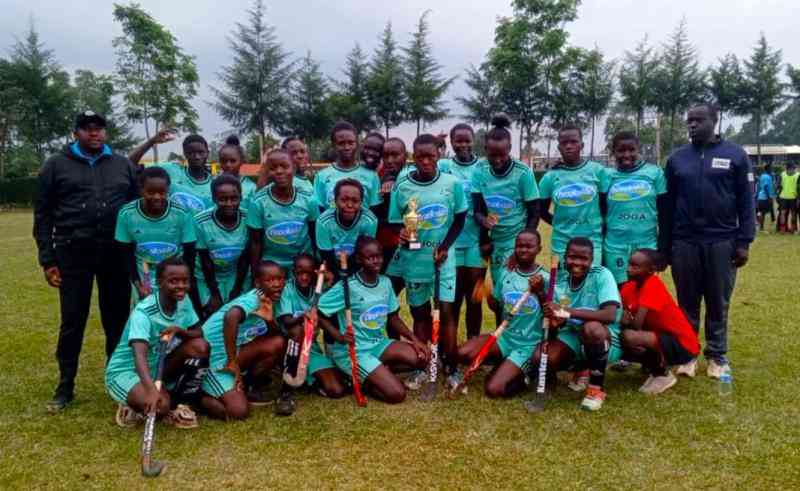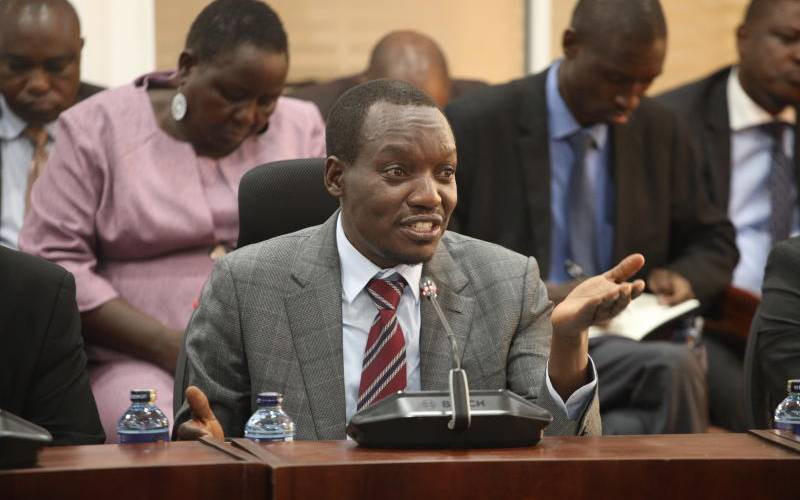By Kenan Miruka
The Tabaka soapstone quarry is a site to behold. Dust swirls from caves and the sound of mattocks and chisels rises above the din of a bulldozer on a nearby road.
Bare-chested men, their faces glistening with sweat, work arduously to provide soapstone carvers with raw material.
To a visitor, it’s hard to believe it is from these caves where those beautiful carvings displayed in hotel lobbies and sold at up market shops come.
But the irony of this ‘white gold’ of Kisii is stark amid its glitter. Locals continue to wallow in poverty, despite the money the stone fetches locally and internationally.
And those who excavate it are exposed to disease and death in the mines.
The ones who benefit from it are a few middlemen, who buy the raw and finished product off the small associations of miners and carvers.
The main quarries are found at Nyabigege, Nyabigena, Nyatike and Gotichaki.
Walk again
 |
Miners extract soapstone at Bomware quarry in Gucha South District. They do not use protective gear and many accidents have been recorded. Photos: Kenan Miruka/Standard |
Mr Cosmas Onchomba, 65, Riamosioma quarry owner, says it was opened around 1896, when men used to carve snuffboxes. Indian settlers later established a factory at Kitele, a short distance from Tabaka, and employed many workers. The miners barely use protective gear. Mines and Geology officials have visited quarries and advised them to use helmets, boots and heavy clothing, but their advice has not been heeded.
"The geologists visited our quarry a year ago and advised us to avoid wearing slippers and to clear the soil before mining," says Onchomba. Experts also say miners should remove the topsoil before excavation.
The most dangerous quarry is Nyabigena. Here, miners have to dig up to 30 metres down to reach the soapstone.
In June this year, a 23-year-old man died when the quarry walls collapsed.
Stay informed. Subscribe to our newsletter
His two colleagues escaped with minor injuries.
Mr James Amisi, 46, says he narrowly escaped death at the same quarry in July 2006, when a huge boulder fell on him. Doctors inserted a metal rod in his upper leg during surgery, so he could walk again.
"We miners are to blame for going after money and ignoring our safety. The owners should be stricter," says Amisi who quit mining after the accident.
Young men eager to make a quick shilling are often the casualties.
"Last year, I found a thief trapped up to the waist at my quarry very early in the morning. We helped him out and elders fined him, but that does not deter them. Another suffered a groin injury and died a few months later," says Onchomba.
Mr Elkana Ongesa, chairman of the giant Kisii Soapstone Carvers Cooperative Society, says in the past, accidents at quarries were rare. In recent years, over 20 lives have been lost.
"Regrettably, people dying from such accidents are young and have joined the industry due to economic frustration. They die due to industry-related ignorance and failure to heed advice from experienced elders. Most miners work for long hours on empty stomachs, and consume illicit liquor prior to mining. This reduces their alertness," he says.
Ongesa says miners are likely to suffer health complications like deep cuts, spinal injuries from lifting heavy loads and eye injuries due to exposure to the stone’s brightness in the sun and rock particles.
Poverty index
And the gains are few. Even quarry owners are not benefiting. A 10-tonne pick-up load of raw soapstone goes for Sh2,500.
"Out of the Sh2,500, you spend Sh500 on labour and hiring mining tools. We end up with little," says Onchomba.
Gucha South District Development Officer Peterson Nyakeri says the district’s poverty index stands at 56 per cent.
He says some earn Sh1,512 per month: "Majority of the population at Tabaka has only primary education."
Most women are employed by carvers to clean, smooth or paint their carvings.
Mrs Elizabeth Nyamosi, 35, has been sanding finished carvings since she got married.
"I earn Sh100 per day. I get between Sh2 and Sh4 for each carving and in a week, I make Sh400. If your employer is good, then he can give you advance payment, with which you can meet family needs," she says.
Mrs Jane Omweri has been sanding carvings in Tabaka for the last ten years. "I feed my children from this work. Our portions of land are small and unproductive, so we have to work in soapstone," she says.
Local MP Omingo Magara accuses middlemen of exploiting locals: "Middlemen buy a 40-tonne lorry of raw material for as low as Sh3,000, leaving locals with nothing to show for their hard labour. The same amount is sold at up to $300 (Sh24,000) abroad."
He says there are plans to make Tabaka part of the tourism circuit, by establishing exhibition centres and good hotels.
The MP says urgent intervention was needed to organise miners and traders in line with World Trade Organisation requirements to make soapstone a profitable commercial venture to locals.
HIV and Aids aggravates the situation. Tabaka has been associated with the highest prevalence rates in the Gusii region.
South Mugirango Constituency Aids Control Committee Coordinator Michael Oyunge says the prevalence rate in Gucha south was 5.1 per cent by December 2007.
Value addition
"Tabaka is a gazetted area, where the Government obtains HIV data. The per capita income here is high, but individuals remain poor," he says.
Mr Peter Ositu, a former Tabaka town councillor, proposes that the local authority takes over the running of quarries.
Ositu further suggests that the Government procures excavators and earthmovers that will be lent to miners through a cooperative.
Co-operatives Minister Joseph Nyagah, in a recent tour of the area, said an investor from the US had approached his ministry seeking to invest in marketing soapstone, but through a large cooperative.
He advised four soapstone carvers’ cooperatives at Tabaka to merge and reap greater benefits, saying value addition should be done locally.
 The Standard Group Plc is a
multi-media organization with investments in media platforms spanning newspaper
print operations, television, radio broadcasting, digital and online services. The
Standard Group is recognized as a leading multi-media house in Kenya with a key
influence in matters of national and international interest.
The Standard Group Plc is a
multi-media organization with investments in media platforms spanning newspaper
print operations, television, radio broadcasting, digital and online services. The
Standard Group is recognized as a leading multi-media house in Kenya with a key
influence in matters of national and international interest.
 The Standard Group Plc is a
multi-media organization with investments in media platforms spanning newspaper
print operations, television, radio broadcasting, digital and online services. The
Standard Group is recognized as a leading multi-media house in Kenya with a key
influence in matters of national and international interest.
The Standard Group Plc is a
multi-media organization with investments in media platforms spanning newspaper
print operations, television, radio broadcasting, digital and online services. The
Standard Group is recognized as a leading multi-media house in Kenya with a key
influence in matters of national and international interest.






